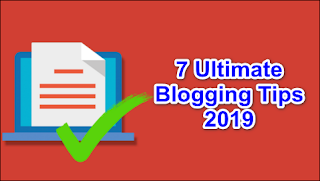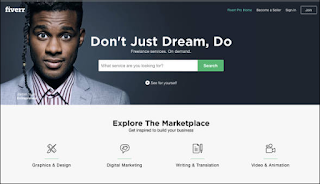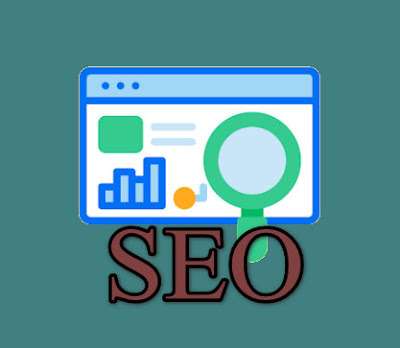7 Ultimate Blogging Tips 2024 - Blogging can be a great way to become financially free, but only if done correctly. This will be difficult and time consuming, of course you have to look at blogs as a business and something to give everything. giving half work will result in failure.
These are tips that I hope I know when I start blogging. These are tips that I have learned and applied to help you get started and build a successful blog. I have also made a list of some of the best tools a blogger must use. Writing everything in full detail will be too much I have simplified it to make it easier to digest.
Some tips that I can share this time, about 7 Ultimate Blogging Tips 2024. Hopefully with these tips, it can be useful and useful for all of us. Thank you and good luck.
These are tips that I hope I know when I start blogging. These are tips that I have learned and applied to help you get started and build a successful blog. I have also made a list of some of the best tools a blogger must use. Writing everything in full detail will be too much I have simplified it to make it easier to digest.
Tips to start
- Select a niche to go after.
- Choose a domain name
- Register your domain with a trusted registrar.
- Select a quality and dependable host. I recommend Siteground based off experience.
- Install the best hosting platform – WordPress runs 25% of the web.
- Select the best plugins to install.
- Create mandatory pages – Privacy policy, terms of use and affiliate disclaimer.
- Create contact and about pages.
- Add copyright to the footer.
- Blog on topics that bring your readers value.
- Make posts evergreen.
- Read other blogs to learn and find inspiration.
- Plan posts ahead of time and be consistent.
- Create daily backups of your site.
Setup site structure & optimize layouts
- Choose an amazing theme that is powerful and easy to customize – I Recommend Elegant Themes.
- Create a logo – 99designs is really awesome for this.
- Add a site title and description.
- Choose brand color to stand out from everyone else.
- Create an easy to navigate header area.
- Be sure that your site is mobile friendly.
- Add social sharing and social follow buttons.
- Use an all in one tool to capture email.
- display related posts in every post footer.
- Add a search box.
- Add most popular posts to sidebar.
- View your site in different windows.
- Use Akismet for comment spam and Thrive comments to encourage better engagement.
- Use Yoast to create a sitemap for your blog.
- Create a custom 404 page.
- Use “redirection plugin” for post URLs that have been changed.
- Validate your site with Google webmasters.
Create spectacular content
- Create an amazing headline. use co-schedule to do this and Thrive headline optimizer to test different versions of the same title against itself for the best one.
- Write quality content that brings value.
- Break paragraphs to 2-5 lines for readability.
- Use relevant images – find free images at pexels, unsplash and Pixabay.
- Make content scannable by using headings and subheadings.
- Publish post under specific categories.
- Write lengthy content with no fluff.
- Create and fill out your author box.
- Check spelling before publishing – use Grammarly. (I suck at spelling.)
- Add CTA at the end of every post.
Secure your site
- Add SSL to your site. Transfer from http to https.
- Change login landing page URL.
- Use a strong password.
- Only use compatible and up to date plugins.
- Make sure all plugins and themes are up to date.
- Use Sucuri for security and as a cdn they are great
- Use a vpn when on a public network.
Optimize for SEO (Search engine optimization)
- Select a preferred domain name – www or no www. It’s a matter of preference.
- Create and submit a sitemap to webmasters.
- Create google analytics and connect it with your webmasters.
- Claim site name on social media platforms
- Use “post name” in permalinks. Go to settings then permalinks to change.
- Install an seo plugin – Yoast is best.
- Use alt and title for images.
- Use keyword in permalinks, title, meta description and throughout post.
- Analyze your competitor’s keywords and backlinks.
- Do not over use keywords by stuffing them.
- Check for and fix all broken links.
- Add internal links to your other posts.
- Add external links to authority sites.
- Aim to have a low bounce rate.
- Write 800 words minimum – the longer the better.
- Submit sitemap to search engines – Bing if you have no account.
- Avoid link farms, link exchange and paying for links.
- Build quality backlinks.
Optimize site for speed
- Optimize image before uploading to your site – use Tinypng.
- Optimize image after uploading to site – use shortpixel.
- Use cache plugin – I recommend WP Rocket
- Use a cdn – I canceled Cloudflare and Maxcdn and now use Sucuri (faster speed and better security)
- Test your speed using Pingdom, and Gtmetrix.
- Install under 20 plugins – less is best.
- Use a lightweight theme that comes pre-compressed like Divi.
- Use fewer ads.
Sharing and Promoting your site
- Make it easy for readers to follow you. Display follow buttons at the top, bottom, and sidebar.
- Use tailwind to double your traffic with Pinterest.
- Add share buttons to your posts. The best tool that’ll double your share counts especially if you use Pinterest is social warfare.
- Share post to social sites right after publishing.
- Find the best time to post to social media.
- Create an Rss feed with Feedburner.
- Notify your subscribers when you publish a new post.
- Follow your competition to see what is working.
- Join Facebook group communities.
- Do guest posts on other quality blogs.
- If you have the budget, do some paid traffic.
Some tips that I can share this time, about 7 Ultimate Blogging Tips 2024. Hopefully with these tips, it can be useful and useful for all of us. Thank you and good luck.
















